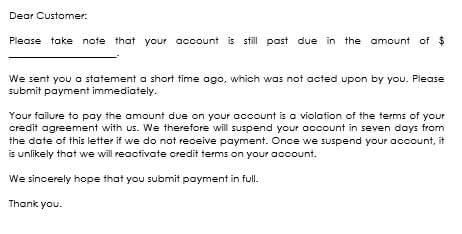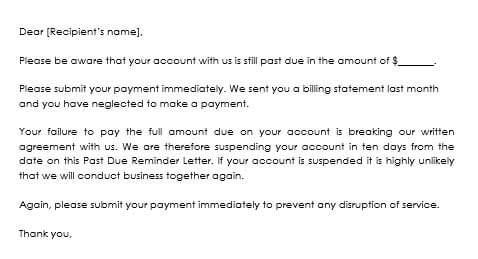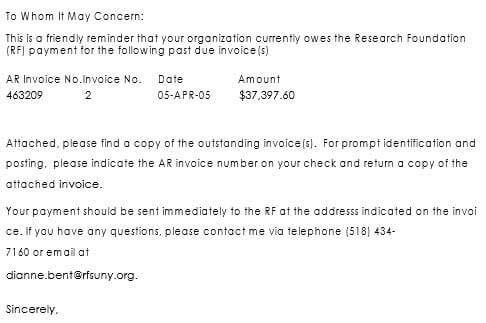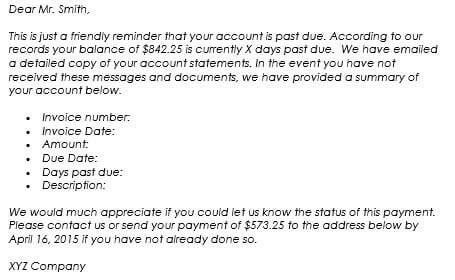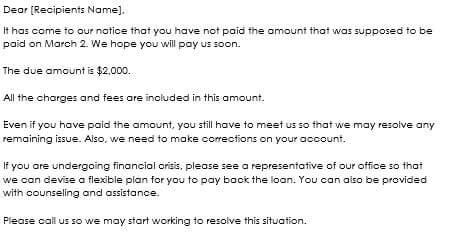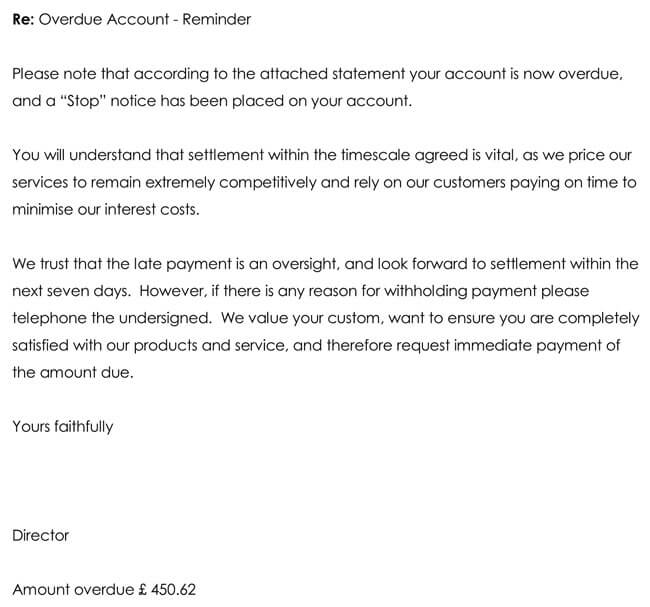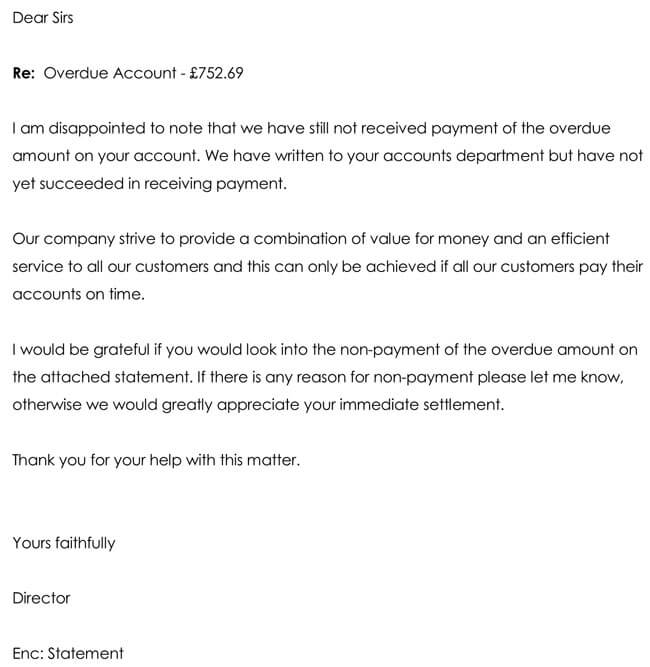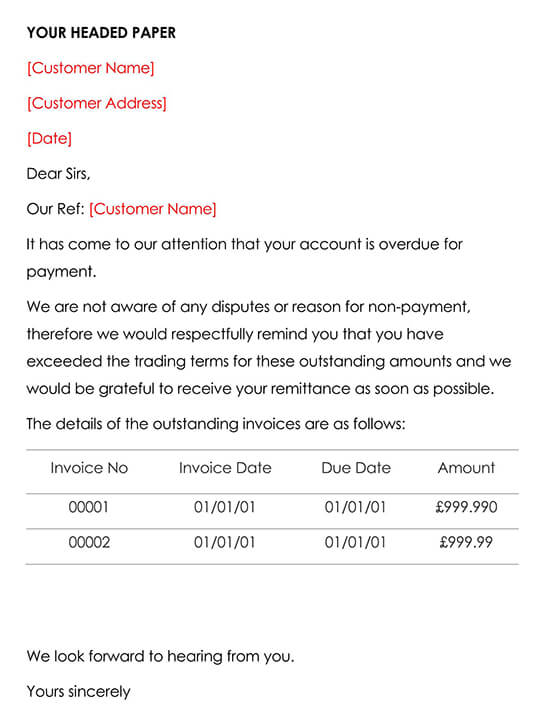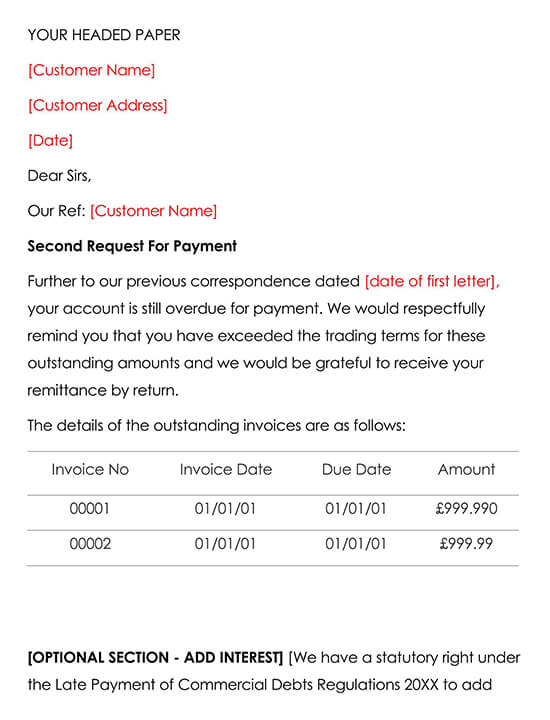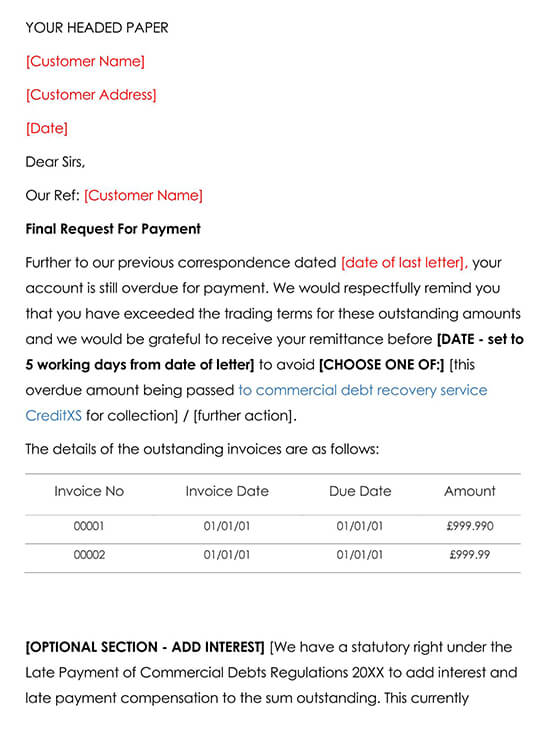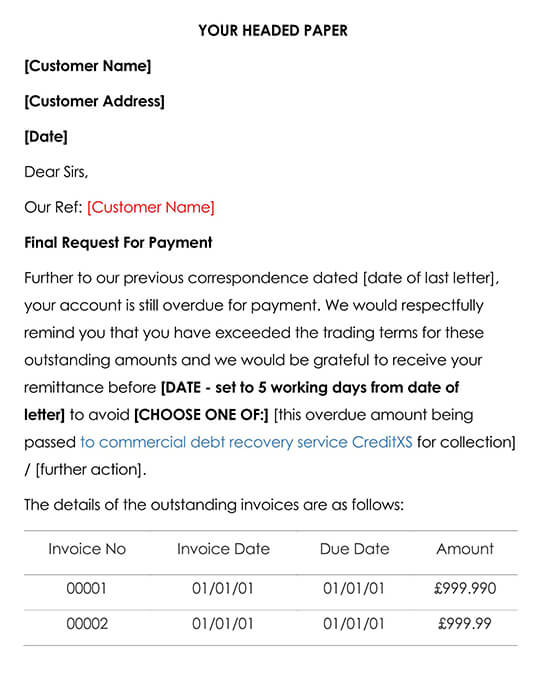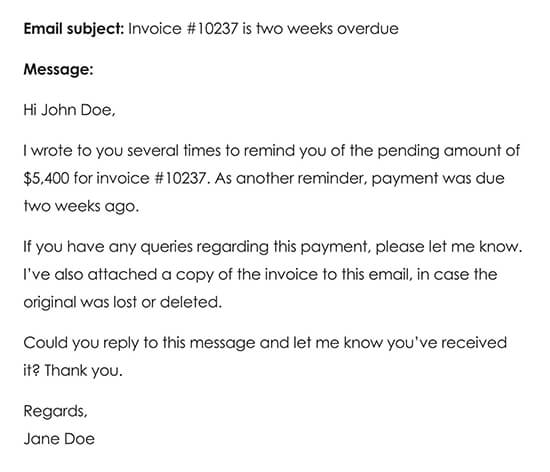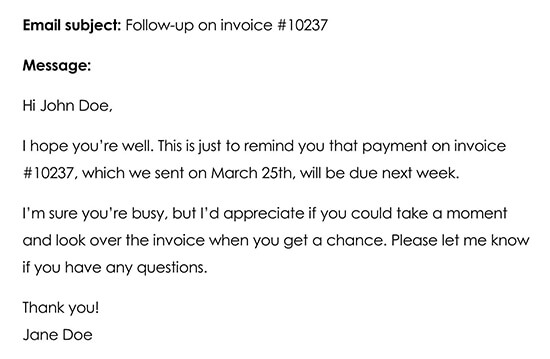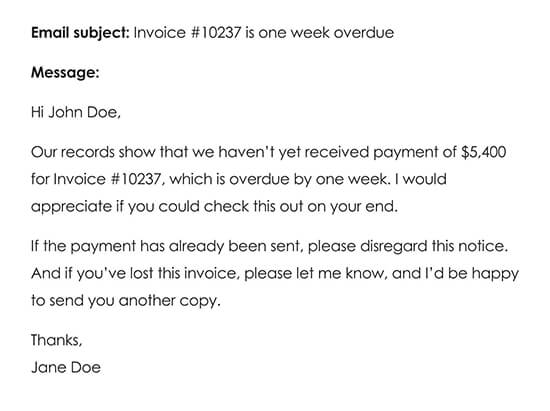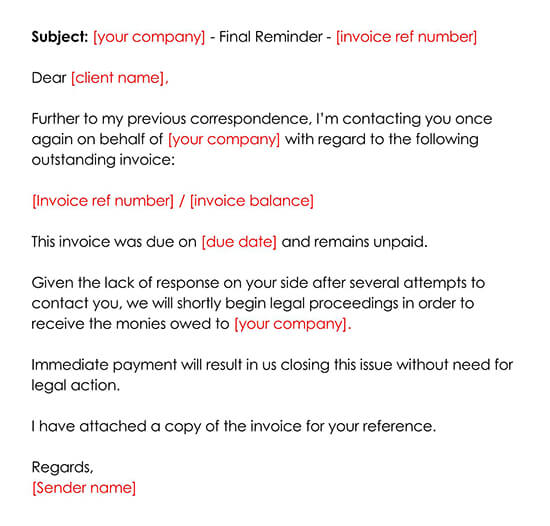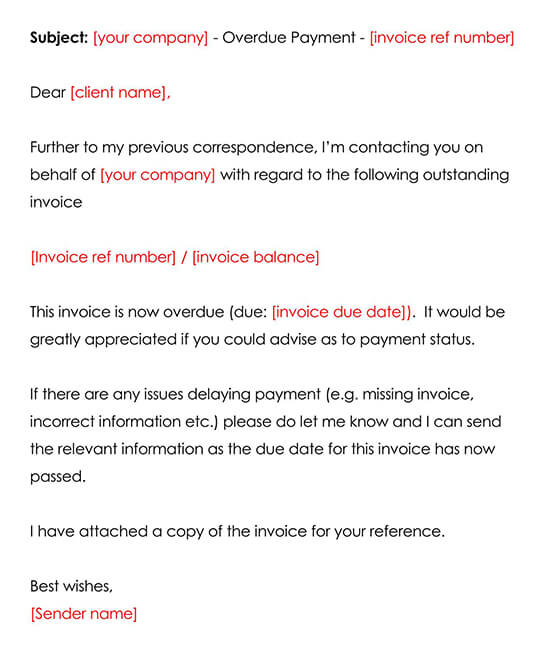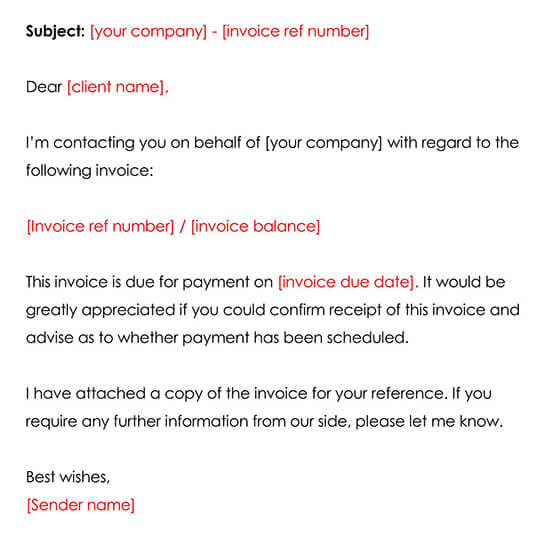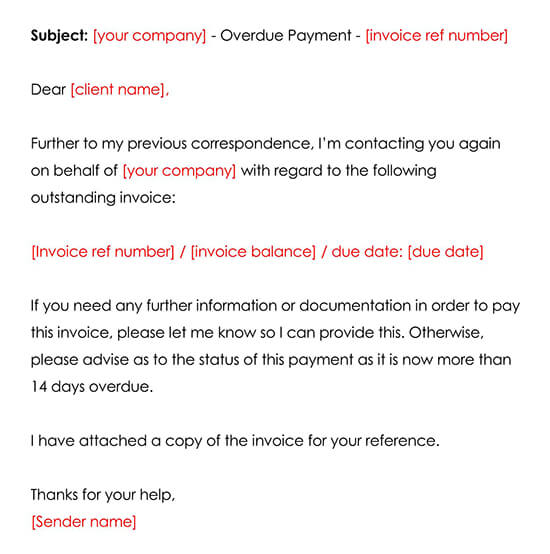Everybody has been owed or rather have owed others money from various transactions at some point in their lives. Timely settlement of these accounts is usually paramount to continue better relationships between the involved parties as the payments are often vital to business growth. Nonetheless, occasionally, these payments may often delay due to several reasons. This usually leaves the business owners to resort to witting and sending overdue payment reminder letters to the concerned parties.
What are the Overdue Payment Reminder Letters?
Overdue payment reminder letters are documents written and directed from a seller/service provider to a client/service beneficiary as a polite reminder informing them of their pending and overdue invoices they owe that need swift settling. The parties involved may often be individuals, companies, or both. Regardless, these letters are usually more polite, cheaper, and faster forms of communication in this context. Therefore, they prevent the need of service providers to undertake legal actions, which could be costly to both parties without first being sure that the clients knowingly defaulted in payments.
This is because, on most occasions, it is usually a case of failure to remember to settle the accounts. Payment reminder letters also give the clients the benefit of the doubt, further manifesting trust for future and continued business transactions.
How Do You Write a Payment Reminder Letter?
These letters often need to be perfectly written to ensure the intended message is passed across ultimately. This usually warrants that you follow a proper format with all the required content. You should also try as much as possible, if not entirely, to avoid simple but commonly committed mistakes.
Therefore, some of the essential information to include in our payment reminder letter entails:
Header
This is usually the starting point and entails information identifying the individual/company from which the letter originated. This includes information such as the name of the company/institution, the sender’s name, the address of the sender, and their respective contact information. You may provide other basic data, although optional.
Date
This follows the header, and date notification in the letters is a mandatory requirement as this will indicate many details. For instance, the date the letter was written, how long it took to arrive at the intended target, and for purposes of referencing to prevent the recipient’s denial upon future inquiries.
Recipient’s data
These come after the date and are essential as they confirm to the recipient that the letter was properly directed to the concerned party. They include but are not limited to the recipient’s name, address, company, and contact information. This section needs accuracy since wrong information would mean the wrong target warranting for possible dismissal of the letter’s authenticity.
Salutations
These constitute the next segment of these letters’ structure, and they should be appropriately placed to bring about the professional yet polite tone of the letters. Commonly used greetings include dear sir/madam, Mr. /Mrs. / Ms. / respected sir/madam and whenever possible, include the name of the recipient if possible.
Body
The body of these letters is always next in the format and also needs to be structured appropriately with the necessary information included. Therefore, your overdue payment reminder letters should be at least three short paragraphs, each responsible for specific points. For instance, you may remind the client about the details of the overdue invoice in the first paragraph.
In the second paragraph, stress should be on the importance and urgency of paying the overdue amount in time or communicate otherwise. Finally, in the last paragraph, appreciate the individual for their time and apologize for any inconvenience.
Complimentary close
These should be placed immediately after the letter’s body, and they should be pleasant and professional to relay respect and politeness. Some of the commonly used closes are “Yours faithfully.” Cordially”, “Sincerely yours,” “Sincerely,” “Respected,” among others.
Footer
This is the last section of the letters and similarly vital. This section should include the writers’ personal information such as their names, designation in the associated company/institution, and contacts for easy contacting and referencing if need be.
4 Thing to Consider
This majorly focuses on the body and the contents of your letter. To ensure that it is even more perfect, you should try and adhere to some, if not all, of the following tips to help minimize mistakes:
- Follow proper format: These letters can often either be formal or informal, depending on the associated parties and the extent/type of relationship they enjoy. Therefore, consider the recipient and write the letter in an appropriate format.
- Be precise and specific: These letters often need not be long and tedious to read, but they should be short and to the point. This means that the information included should be relevant and in short sentences to give the recipient an easy time reading and understanding.
- Embrace a polite tone: The letters should also be written in a friendly yet professional tone as polite words could often motivate the clients while also maintaining your good relations in the process. Therefore, demanding, rude, and threatening language should be avoided at all costs despite the number of reminders already sent.
- Be as detailed as possible: This means that your letters should be indicative of the amount overdue, the deadline and possible extended deadline, consequences associated, among other details. This will assist the recipient in making a proper and informed decision afterward.
Types of Overdue Payment Reminder Letters
Overdue Payment Reminder Letters often come in varieties throughout the reminding periods.
They include:
First overdue payment reminder letter
This is usually sent first ahead of the due date. Although optional, it is always essential. Just a number of days shy of the due date, these letters usually accomplish several functions. For instance, details regarding the payment criteria may be availed in these letters. You could also ask the clients to confirm they are aware of the preceding transactions and have subsequently not forgotten. They also give the customers a platform for a response with reasons in case they would be delaying timely payments.
Second overdue payment reminder letter
These letters are usually sent immediately after the invoice settlement has passed the set overdue date. Thus, without the payments and communications from customers explaining otherwise, you should write these letters to remind the clients that the due date elapsed. You should make sure to inform them of the previously set due date, the amount agreed upon, and how to pay while also giving them the opportunity to respond.
Consequences that would befall the client for failure to honor the agreement should also be stated, providing a clear action path that will be taken by the service provider/seller. They are usually written within a specific timeframe as per particular individual/company policies. Most of them are usually written between 14 to 30 days past the due date.
Third overdue payment reminder letter
This category of overdue payment reminder letters is usually written after the second letter is sent with no response received from the client. They seek to further remind the clients of their overdue bills and the need to settle them. Furthermore, included in the letters should be details of the actions currently being undertaken, such as added interest or compensation as per the agreement and policies mentioned in the second letter. You should also clearly state the overdue amount and the means to pay it while giving the clients a chance to respond to your letters.
Final overdue payment reminder letter
This entails the last group of these letters written after repeatedly contacting the client to settle their overdue bills without any luck. These letters are usually the final warning variety giving you client/s the last chance to respond before you resort to other means of collecting the payment owed, such as employing legal action suits. Thus, you should clearly state this in your letter warning them since legal action would escalate the incident further and maybe costly in many ways to both parties involved.
Sample Letters and Templates
We have samples of overdue payment reminder letters that you can use as a template to fit your own business. Our templates are friendly, easy to use, and will save you time because you won’t have to write a letter from scratch.
The Do’s and Don’ts
- Do check your letter for any mistakes or typos. It’d be embarrassing and highly unprofessional to send a reminder letter with the customer’s name misspelled (for example).
- Do have a timeline for sending the letters out? Are they sent every 30 days? Every two weeks? It’s up to you. Just makes sure you stick with that timeline so you’re consistent.
- Do make it easy for the customer to contact you if they have any questions about the letter they received.
- Don’t make the letter threatening or condescending. It’ll just make the customer mad. You want to work with the customer to get the money you’re owed.
- Don’t get the amount they owe wrong. The amount stated in the letter should match up with their account information.
